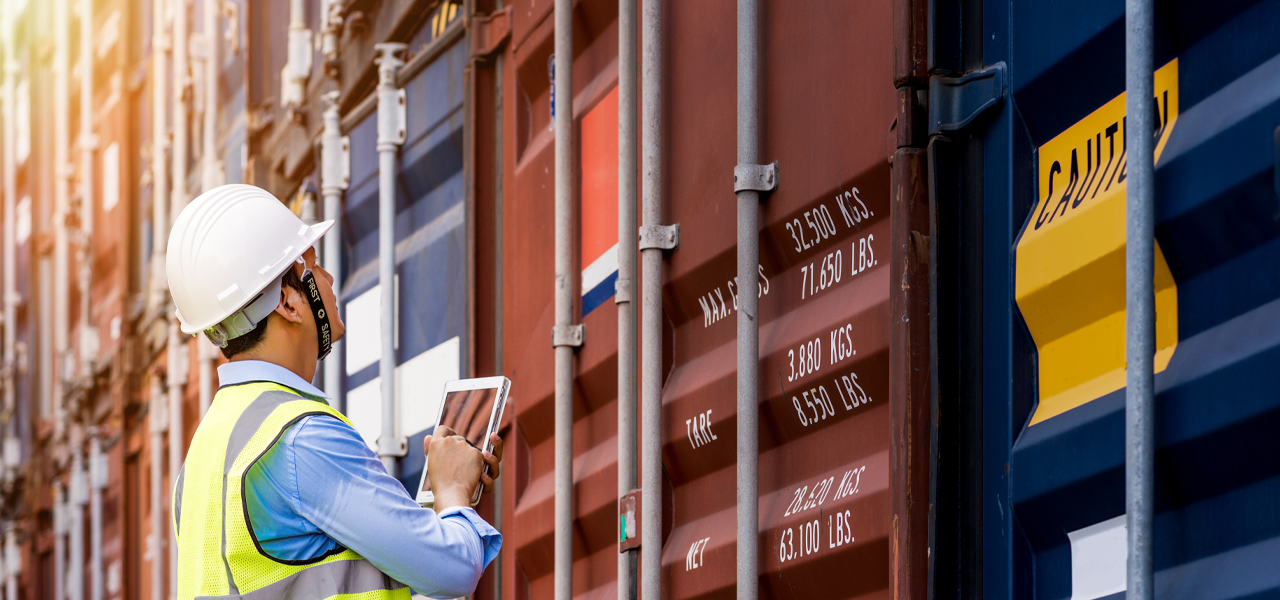
Shipping Containers: The Materials
“What are these shipping containers made of?”
That is the question we at SteelSTORED are being asked frequently. That is because more and more businesses and individuals are exploring repurposing shipping containers into houses, garages, aboveground swimming pools, pop-up stores, corporate headquarters, art studios, and storage facilities. Specifically they need to know how durable are the materials, what kind of maintenance is required, and what about the environmental impacts.
Back on the Ocean
The original function of shipping contains has been to store goods for transport across the ocean. That meant the material had to stand up to all kinds of weather conditions, prevent damage to the content, and limit the weight load.
That did not present much of an engineering challenge. That is because since the time when the shipping container had been invented in 1956 by Malcolm McLean, it has been a simple structure. The “moving parts” are few. They include the two cargo doors and the corner castings. In the tough shipping industry, pragmatists have kept it that way.
Corten Steel
Early adopters of the shipping container found that corten steel provided the perfect fit for the unique requirements of ocean transport. That is the primary material for the shipping container’s corrugated wall panels, the frame, those cargo doors, and metal cross members (that is, beams or joists).
What is corten steel? That is often called “weathering steel.” And that moniker sums up its major materials advantage: the ability to resist rust. Essentially it is an alloy of steel and other metals designed for durability amid all water and air conditions. This has been especially important given the extreme weather of climate change.
An example of its durability would be the dynamics of a severe storm at sea. The containers get nicked. Even paint comes off. But because of corten steel’s engineering that surface will oxidize, creating a layer of protection. The corrosion is limited and will not penetrate further than that initial nick.
That feature accounts for why most used shipping containers have so relatively little wear and tear. In addition, corten steel is weldable, which means the containers are easy to modify for other uses. Those could be the need to create windows or combine two containers by eliminating the walls.
Into the Future
Policy makers concerned about climate change have pressured the entire shipping industry to consume less fuel. In addition to being eco-friendly, that could reduce the industry’s surging expenses. A major focus is on the replacing steel which would lighten loads and lessen energy consumption. Among the possibilities is carbon fiber.
Meanwhile, technology can enhance the qualities of the existing corten steel.
Cross Members
Another component of the containers – both for shipping and repurposing – is what laypeople would think of as the “bottom.” Those in the trade call it the “cross members.” They are the beams or joists. They support the floor. What the cross members create is the needed space between that floor and the ground as a barrier so moisture cannot penetrate.
It is exactly that container feature which makes it ideal for space to live in. There is no need for a foundation. That accounts for one of the myriad reasons why retrofitting the containers for everything from houses to stand-alone offices is so affordable. Unlike conventional housing, no foundation is required.
Flooring
Within the container the materials for the flooring have to ensure problems are not being created. Those range from preventing mildew within the container to deterring parasites including bugs from entering.
Until recently the most popular material has been marine-grade plywood. What is standard is injecting insecticides.
Growing more popular has been the bamboo option. It is lower in cost and the supply is more available. Even more important in this era of a sustainability mindset, bamboo is a renewable resource.
The aesthetic value of bamboo flooring has appealed to those who convert the container into living space.
Material Costs
All industries have experienced continuing increases in the wholesale expense for materials.
Shipping containers have been primarily affected by the rising cost of steel. At one point in time the Federal Research tracked that as up 25 percent from a comparable period a year before. Overall, according to Fortune, those steel prices have galloped upward more than 200 percent since March 2020.
The factors underlying that trend include:
- Tariffs on imports. With fewer imports, domestic manufacturers have the upper hand in setting price points.
- Pent-up demand from COVID. That has generated a boom in consumption involving steel as a material. It is a steel seller’s market.
- Supply chain bottlenecks. With less being available the scarcity raises prices.
However, even with these inflationary pressures, SteelSTORED has managed to maintain our pricing as affordable. For a 20-foot container our price ranges from $4,000 to $6,000. For a 40-foot container the price ranges from $6,000 to $10,000.
Simplicity Underlying Utility
From its invention more than 65 years ago to now, the simple structure of the shipping container has allowed visionaries to put it to so many uses. SteelSTORED invites the curious to a complimentary consultation on how a shipping container can serve a business or a lifestyle.
